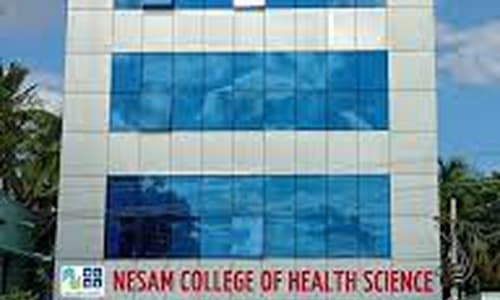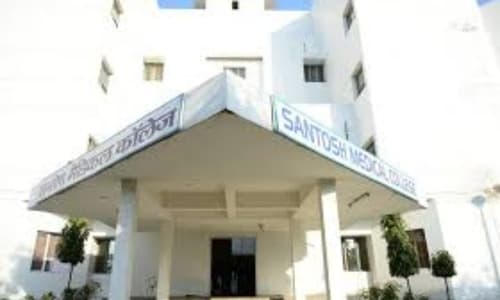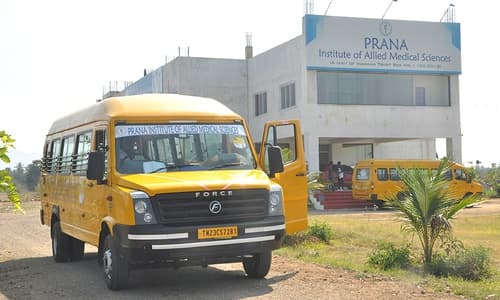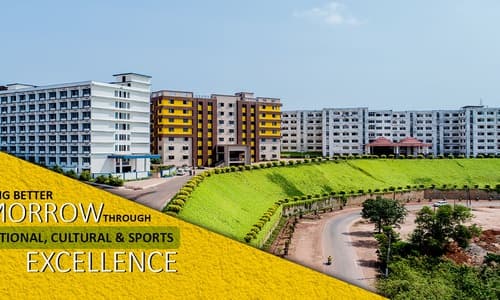

Dr. Bidhan Chandra Roy, North Bengal Medical College and Hospital (NBMCH) was established in 1968 as the first medical college in North Bengal. The institution's planning and execution were overseen by Ajit Kumar Panja, the then State Health Minister of West Bengal. Prof. Ajit Kumar Duttagupta was appointed as the first official principal of the college, which was initially known as the North Bengal University Medical College (NBUMC). The college was affiliated to the North Bengal University since its inception. Starting from the 2003 admission batch, it is formally affiliated to the newly formed West Bengal University of Health Sciences. The college and hospital are funded and managed by the Government of West Bengal. Admission to this government medical college for undergraduate course (MBBS) is through competitive entrance exams.Entrance to the college is on the basis of ranks achieved by the student in NEET (National Eligibility-cum-Entrance Examination) conducted by the NTA, as is the case with nearly all other medical colleges in the country by a Supreme Court order. For postgraduate courses one has to clear the West Bengal Postgraduate Medical Entrance or All India Postgraduate Medical Entrance Examination. From the year 2013 post graduate students are going to be selected from single All India entrance, National Eligibility and Entrance Test.
| Course | Duration |
| Ophthalmology (Eye) | 3 year |
| Otolaryngology (ENT) | 3 year |
| General Medicine | 3 year |
| General Surgery | 3 year |
| Orthopedics | 3 year |
| Obstetrics & Gynecology and Pediatric | 3 year |

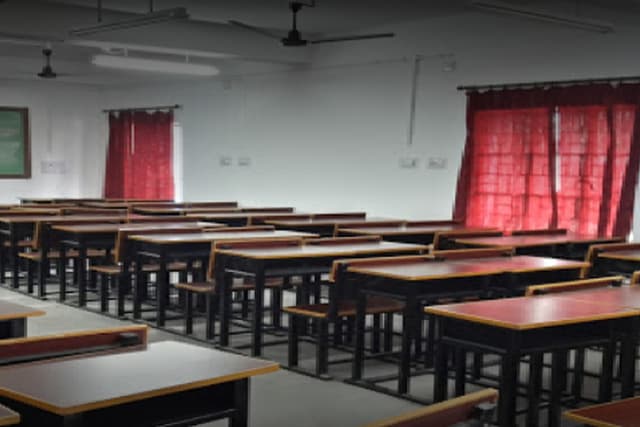
The Examination: The West Bengal Joint Entrance Examinations Board (WBJEEB) will conduct OMR based Common Entrance Test JENPAS(UG)-2024 for admission in various Colleges/ Institutes in the State of West Bengal for the academic session2024-25 into the following Undergraduate Courses.
The applicant must be a citizen of India. The applicant must be domicile of West Bengal.
The upper age limit for admission varies depending on the course. For candidates applying to B.V.S.O, BMLT, CCT, OTT, PT, PA, MMB, and BHA, the maximum age allowed is 35 years. For courses such as R.I.T, C.S.I.C, and R.T., the upper age limit is 40 years. However, for courses not specifically listed under age-restricted categories, there is no upper age limit, allowing applicants of any age to apply as long as they fulfill the academic and other eligibility requirements. The candidate must have passed the (10+2) examination from any recognized Board/Council. They must have individual pass marks in both theory and practical (where applicable) in required subjects.
For courses such as BMLT, CCT, OTT, PT, PA, MMB, R.I.T, C.S.I.C, and R.T., the compulsory subjects are Physics, Chemistry, Biology, and English. For the B.V.S.O course, candidates must have studied Physics, Chemistry, Biology, Mathematics, and English. The program, the required subjects are Physics, Chemistry, Biology, and English. The BHA course does not have specific subject requirements. In terms of aggregate marks, candidates from the General and EWS categories must obtain a minimum of 45% aggregate in the required subjects, while those from SC, ST, OBC-A, OBC-B, and PWD categories must secure at least 40%. Specifically, for the B.V.S.O course, a minimum of 50% aggregate in Physics, Chemistry, Biology, and Mathematics (PCBM) is required for General and EWS candidates, and 45% for reserved categories. The candidate must have passed the (10+2) examination from any recognized Board/Council. They must have individual pass marks in both theory and practical (where applicable) in required subjects.
Procedure for submission of application form, payment of examination fees | |
Registration | While submitting the application form, candidates must enter their personal details such as name, father’s and mother’s names, date of birth, gender, identification details, address, mobile number, and enter name, father’s name, mother’s name, date of birth, gender, and domicile carefully, as this information cannot be changed or edited later under any circumstances. After registration, the candidate must create a password, select a security question and answer, and complete the process. An application number will be generated and sent via SMS/email. Candidates must remember their application number, password, and security question/answer, as there is no other way to recover the password except through the "Forgot Password" option. The Board emphasizes that no person or agency can change any information without the password; hence, candidates must not share their password, and the Board will not be responsible for any change resulting from sharing/ divulging of the password. |
Application | At this stage of the application process, candidates are required to fill in several important details such as their domicile status, category (if applicable), PWD (Persons with Disabilities) status, family income status, religion, nationality, and academic qualifications. They must also select their preferred option for appearing in the examination—either Paper-I only, Paper-II only, or both Paper-I and Paper-II. Following this, candidates need to choose their preferred examination zones in order of priority and submit the completed application |
Uploading of images | The candidate is required to upload JPG/JPEG images of his/her recent color photograph (10 to 200kB) and signature (4 to 30 kB). All documents are to be uploaded in one go. |
Payment of Examination Fees | The examination fees for JENPAS(UG)-2024 can be paid through Net Banking, Debit Card, Credit Card, or QR Code only. For candidates applying for only Paper-I or only Paper-II, the application fee is ₹500 for General candidates and ₹400 for SC/ST/OBC-A/OBC-B/EWS candidates, plus applicable bank service charges. For those applying for both Paper-I and Paper-II, the fee is ₹800 for General candidates and ₹650 for SC/ST/OBC-A/OBC-B/EWS candidates, in addition to the bank’s service charges. It is important to note that the fee once paid is non-refundable under any circumstances. |
Correction of application form | It is not possible to correct any primary registration data i.e., Name, Father’s Name, Mother’s name, gender, domicile, and Date of birth. If any candidate intends to correct any other information in his/her application, he/she can do so after logging in during the given correction period. The Board will not entertain any request for any correction under any circumstances beyond the correction period. Also, the Board will not make any correction on behalf of any candidate. |
Papers and Ranks: Candidates who appear for both Paper-I and Paper-II of the JENPAS(UG) examination are eligible for both the General Merit Rank (GMR) and the BHA Merit Rank (BMR). Such candidates will be considered for admission to all available courses, including Bachelor in Hospital Administration (BHA). Those who appear only in Paper-I are eligible for the GMR and will be considered for admission to all courses except BHA. Conversely, candidates appearing only in Paper-II are eligible for the BMR and will be considered for BHA admission only.
A. The test will consist of two papers namely, Paper-I and Paper-II.
B. Paper-II is for admission in BHA course only and Paper-I is for other courses.
C. During application, a candidate can apply for only Paper-I or only Paper-II or for both.
D. Paper-I will have the following structure.
| Subject | Category-1 Each Q carries 1 mark (-ve marks = -1/4) | Category-2 Each Q carries 2 marks (No -ve marks) | Total Number of Questions | Total Marks |
|---|---|---|---|---|
| No. of Questions | No. of Questions | |||
| Physics | 15 | 5 | 20 | 25 |
| Chemistry | 15 | 5 | 20 | 25 |
| Biology | 15 | 5 | 20 | 25 |
| Basic English | 20 | - | 20 | 20 |
| Logical reasoning | 20 | - | 20 | 20 |
| Total | 85 | 15 | 100 | 115 |
| Subject | Category-1 Each Q carries 1 mark (-ve marks = -1/4) | Category-2 Each Q carries 2 marks (No -ve marks) | Total Number of Questions | Total Marks |
|---|---|---|---|---|
| No. of Questions | No. of Questions | |||
| Physical Science | 25 | 5 | 30 | 35 |
| Mathematics | 10 | 5 | 15 | 20 |
| General knowledge | 10 | 5 | 15 | 20 |
| Basic English | 20 | - | 20 | 20 |
| Logical reasoning | 20 | - | 20 | 20 |
| Total | 85 | 15 | 100 | 115 |
F. All questions will be of Multiple-Choice Question (MCQ) type, with four answer options. Time for each paper is 1½ hours. The questions will be in both English and Bengali language (except Basic English, Logical Reasoning and General Knowledge).
| Category | Scoring methodology |
|---|---|
| 1 | a) Only one option is correct. b) Correct response will yield 1 (one) mark for each question. c) Incorrect response will yield -1/4 (25% negative) marks for each question. d) For any combination of more than one option, even if it contains the correct option, the said answer will be treated as incorrect and will yield -¼ (negative ¼) marks. e) Not attempting the question will fetch zero mark. |
| 2 | a) One or more options is/are correct. b) Marking all correct options only will yield 2 (two) marks. c) For any combination of answers containing one or more incorrect options, the said answer will be treated as incorrect, and it will yield zero (0) mark even if one or more of the chosen options is/are correct. d) For partially correct answers, i.e., when all correct options are not marked and also no incorrect options are marked, marks awarded = 2 × (no of correct options marked) / (total no of actually correct options) e) Not attempting the question will fetch 0 marks |
Mode of answering in the examination: In the examination conducted by WBJEEB, candidates are required to answer questions on a specially designed Optical Machine-Readable Response (OMR) sheet, which is evaluated using the Optical Mark Recognition method. Therefore, it is crucial for candidates to follow the correct method of marking their responses. The answers must be indicated by completely darkening the appropriate circle or bubble using a blue or black ink ballpoint pen. Any other form of marking—such as incomplete shading, use of pencil, cross or tick marks, dots, circular marks, overwriting, scratching, erasing, use of white ink, or marking outside the designated area—may result in the response being read incorrectly or not being read at all. Such discrepancies may lead to wrong, partial, or ambiguous evaluation of the answer, for which WBJEEB will not hold any responsibility. Additionally, once a response is marked, it cannot be edited, changed, erased, or modified under any circumstances.
Ranking Methodology and Merit Lists: WBJEEB will prepare merit ranks based on the candidates’ score in the Common Entrance Test. Individual candidates will be able to view and download his/her Rank Card, which will contain score and rank. WBJEEB does not publish any rank/score list for public to ensure confidentiality to each individual candidate.
Note: The Admission Process is written as per the ordinance of the official Counselling Agency.
